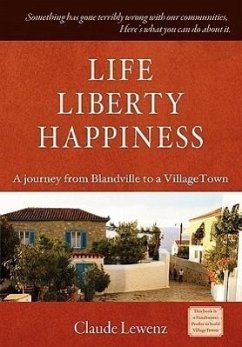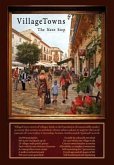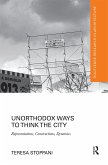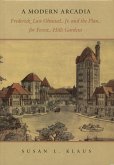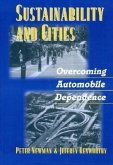Sometimes the most effective way to talk about a good idea is to write a story. This book tells the story of Ed Rice, a semi-retired senior town planner who spent 50 years planning the suburban developments of the town of Blandville, the place that could be anywhere. When the judge takes away his drivers license, he discovered what an absolute mess he and his peers created in approving what his critics called suburban sprawl. Unable to get around without a car, he sells his split-level rancher in Blandville Heights, and arranges for a driver to take him to a retirement home fours hours away. He has no choice as he resigns himself to an empty future where he will have little to do other than keep himself comfortably busy while he waits for death to take him. As his driver transports him one last time along the wide boulevards of Blandville, Ed explains to his driver the hollowness of what he helped build since the 1950's... a place built not to serve its citizens, but to sell more cars. Finally, worn out as they pull onto the freeway, he drifts off to sleep. He awakes when his driver stops for lunch at a VillageTown; a 10,000 population community where everything its citizens need for daily life is within a ten-minute walk. The Visitor's Bureau invites him and his driver to take a tour of a most remarkable place, socially and culturally enriched, with a thriving local economy. It is a town made of 20 villages, side by side, each village different that the next, so it feels more like traveling from one country to another. His hosts explain that a VillageTown provides for what the ancients called "The Good Life". When several villages come together so they may be self-supporting or nearly so, the purpose of their continued existence is to provide for the Good Life, understood as the pursuits of conviviality, citizenship, artistic & intellectual growth, and spiritual development and fulfillment. Ed's tour guide, a young exchange student in the VillageTown hosted university year-abroad program escorts him from one village to another, introducing him to its citizens, each of whom tells their story of their life in their village. Most of the stories are real, and some of those who speak to Ed use their own words. Called cameos, these people include former Secretary of the Interior Stewart L. Udall, Corporate Anthropologist Michael Henderson, Biologist Elisabet Sahtouris and Director of Doing Richard Hollingum. Other cameos by Professor John Bremer, and Slovenian Ambassador of Culture Miha Pogacnic are written by the author, but approved by the speakers. The author and many of the cameo speakers are part of a group called the Village Forum, dedicated to turning a good idea into real VillageTowns built around the world. It's an idea worth spreading; it's an idea worth doing. The book has been written for two reasons. 1) To explain the idea in an easy-to-read way that invites people to build their village. 2) To raise funds to build VillageTowns. All profits earned from the book sales goes to building VillageTowns. The author will collect no royalties and the publisher no fees. If, after reading the book, you like the idea, go to www.villageforum.com to learn more. If you think you would you like to live in a VillageTown the forum is where to express interest. Also check out two other books written by Claude Lewenz. "How to Build a Village" is a 256 page book with over 400 color photographs that provides detailed patterns of what works and why. "VillageTowns - the Next Step" is a recent book written because projects are now underway in four countries.
Hinweis: Dieser Artikel kann nur an eine deutsche Lieferadresse ausgeliefert werden.
Hinweis: Dieser Artikel kann nur an eine deutsche Lieferadresse ausgeliefert werden.

